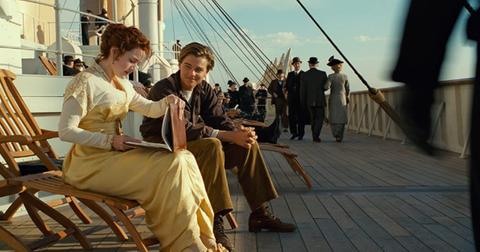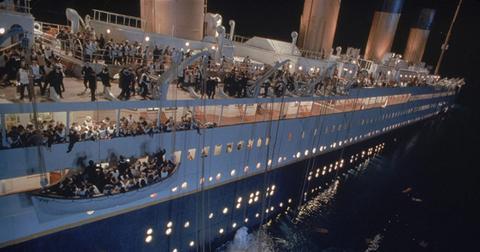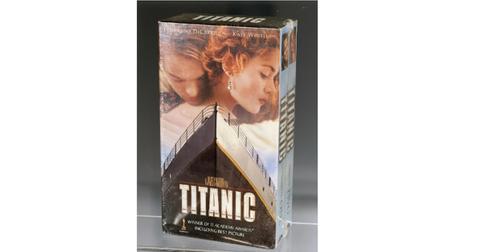The Making of 'Titanic' Was Almost as Spectacular as the Film Itself — Details on Its Filming Locations
Feb. 15 2023, Published 4:24 p.m. ET

Titanic is one of the greatest films of all time: Change our minds.
Back when writer-director James Cameron was in the midst of filming his historical epic about the real-life doomed ship, critics were already champing at the bit, ready to tear the movie apart. It's over budget! It's delayed! $200 mill for a sappy love story on a boat? This will be a box-office dud! But then the film came out at the tail end of 1997, and (mostly) everyone shut their mouths really quickly about all that.
Dazzling, moving, and hauntingly scored, Titanic — about the love story between resourceful scallywag Jack Dawson (Leonardo DiCaprio) and tightly wound rich girl Rose DeWitt Bukater (Kate Winslet) as their paths cross aboard the ill-fated ship — was as thrilling and spectacular as it was beautiful and heart-wrenching. The movie did so well that it stayed in theaters for nearly a year before gracefully bowing out in October 1998.
Below, check out some fascinating details about the filming of the Oscar-winning blockbuster.

What were the filming locations for 'Titanic'?
After five years of research and 12 diving expeditions, James and his team were ready to make the film. They re-created an almost full-sized replica of the ship's exterior in Mexico's Baja California, at Fox Baja Studios (now called Baja Studios), in a giant water tank.
Filming also took place in Los Angeles, including the Belmont Olympic Pool in Long Beach and the SS Lane Victory in San Pedro for some water scenes. The SS Jeremiah O'Brien in San Francisco was even used to shoot some engine scenes. Filming took place in Canada as well, with the present-day shots of the actual ship wreckage reportedly filmed just off Halifax harbor.
Indeed, James insisted they film the real wreckage underwater in the Atlantic Ocean for the modern-day scenes in the movie.
Teaming up with a top Russian oceanic research institute and using their submersibles, James said his team built their own special cameras, camera housings, and control systems to survive the pressure of a two-and-a-half-mile depth.

"No one had taken a camera that deep before," he told Omni in 1998 (per the book James Cameron: Interviews). "The crushing force of the water would implode any normal camera housing." He explained that the pressures that far down in the ocean are greater than in outer space.
Part of their filming included sending a robot camera within the ship. But the director insisted they went into the project with respect in mind: "We were going to photograph it so other people could share the experience; we were not going to take anything."
As for the ship's replica? James explained that it was more of a set than a model, and that it was about 10 to 15 percent shorter than the real RMS Titanic. "The full shots of the ship are done with computer graphics, models, and animated water," he said.

James's attention to historical accuracy and detail also led him to use the same company that made the ship's original lifeboat davits for the ones shown and used in the film. He noted that "the Wellan Davit Company built our davits to their old plans. We literally had the very same piece of machinery used on the Titanic to lower a lifeboat."

"And when you see the interior of the ship in this film, it's absolutely accurate," he added. "It's as close as you can get to being in a time machine and going back and being on that ship."
The result? A story that — perhaps unexpectedly — resonated with viewers everywhere.

If you had this 'Titanic' double VHS, it's time to invest in an anti-aging cream. (Yes, we had it.)
"My theory is you spend two hours setting up the story with people you really care about, and you play it out where you don't know whether or not they will survive," James said. "I mean, how do you make a movie about an event everybody knows how it ends? We all know the ship sinks. You have to make it about how the sinking of the ship, which is inevitable, affects the people you care about."